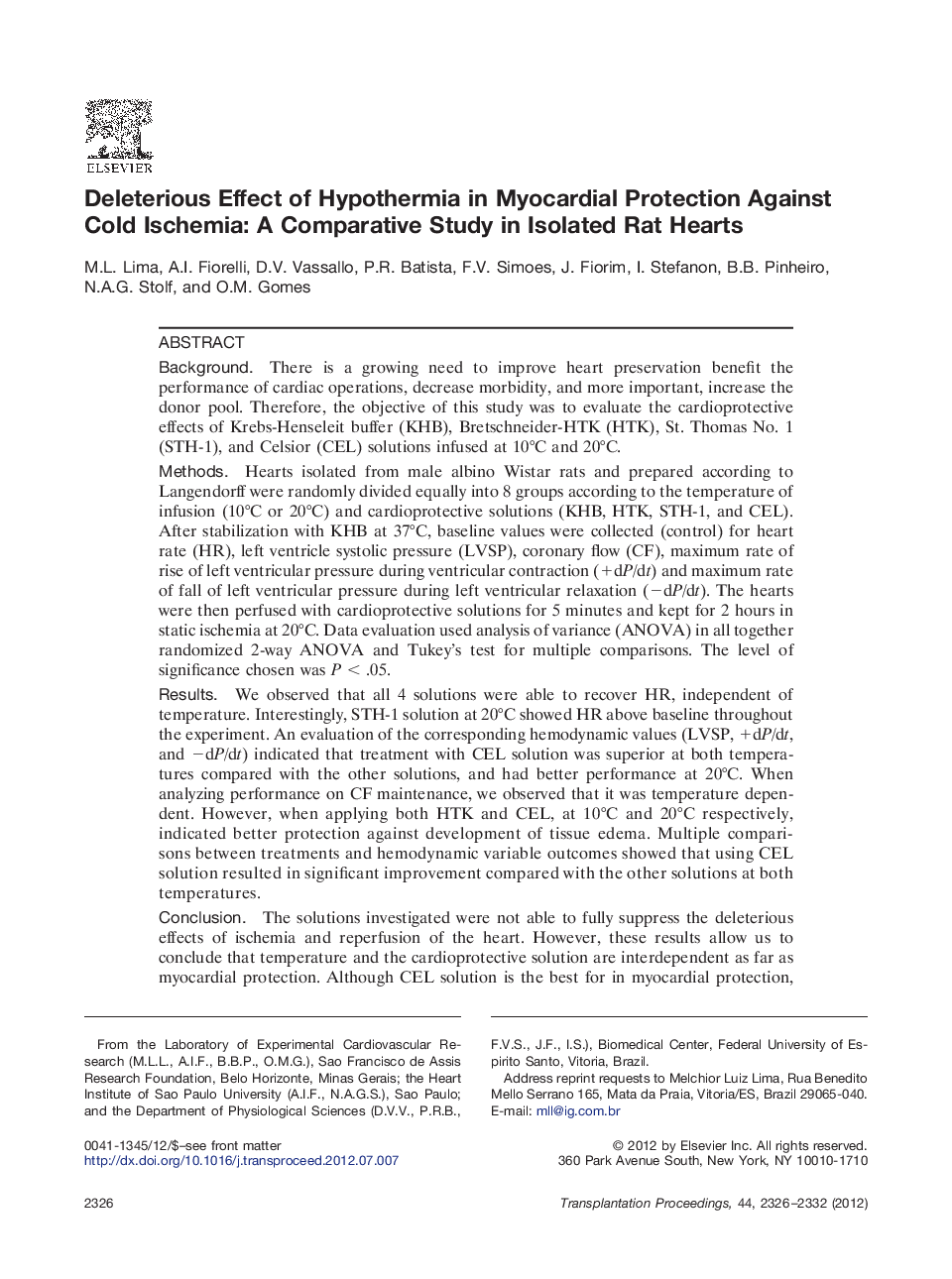| Article ID | Journal | Published Year | Pages | File Type |
|---|---|---|---|---|
| 6248000 | Transplantation Proceedings | 2012 | 7 Pages |
BackgroundThere is a growing need to improve heart preservation benefit the performance of cardiac operations, decrease morbidity, and more important, increase the donor pool. Therefore, the objective of this study was to evaluate the cardioprotective effects of Krebs-Henseleit buffer (KHB), Bretschneider-HTK (HTK), St. Thomas No. 1 (STH-1), and Celsior (CEL) solutions infused at 10°C and 20°C.MethodsHearts isolated from male albino Wistar rats and prepared according to Langendorff were randomly divided equally into 8 groups according to the temperature of infusion (10°C or 20°C) and cardioprotective solutions (KHB, HTK, STH-1, and CEL). After stabilization with KHB at 37°C, baseline values were collected (control) for heart rate (HR), left ventricle systolic pressure (LVSP), coronary flow (CF), maximum rate of rise of left ventricular pressure during ventricular contraction (+dP/dt) and maximum rate of fall of left ventricular pressure during left ventricular relaxation (âdP/dt). The hearts were then perfused with cardioprotective solutions for 5 minutes and kept for 2 hours in static ischemia at 20°C. Data evaluation used analysis of variance (ANOVA) in all together randomized 2-way ANOVA and Tukey's test for multiple comparisons. The level of significance chosen was P < .05.ResultsWe observed that all 4 solutions were able to recover HR, independent of temperature. Interestingly, STH-1 solution at 20°C showed HR above baseline throughout the experiment. An evaluation of the corresponding hemodynamic values (LVSP, +dP/dt, and âdP/dt) indicated that treatment with CEL solution was superior at both temperatures compared with the other solutions, and had better performance at 20°C. When analyzing performance on CF maintenance, we observed that it was temperature dependent. However, when applying both HTK and CEL, at 10°C and 20°C respectively, indicated better protection against development of tissue edema. Multiple comparisons between treatments and hemodynamic variable outcomes showed that using CEL solution resulted in significant improvement compared with the other solutions at both temperatures.ConclusionThe solutions investigated were not able to fully suppress the deleterious effects of ischemia and reperfusion of the heart. However, these results allow us to conclude that temperature and the cardioprotective solution are interdependent as far as myocardial protection. Although CEL solution is the best for in myocardial protection, more studies are needed to understand the interaction between temperature and perfusion solution used. This will lead to development of better and more efficient cardioprotective methods.
